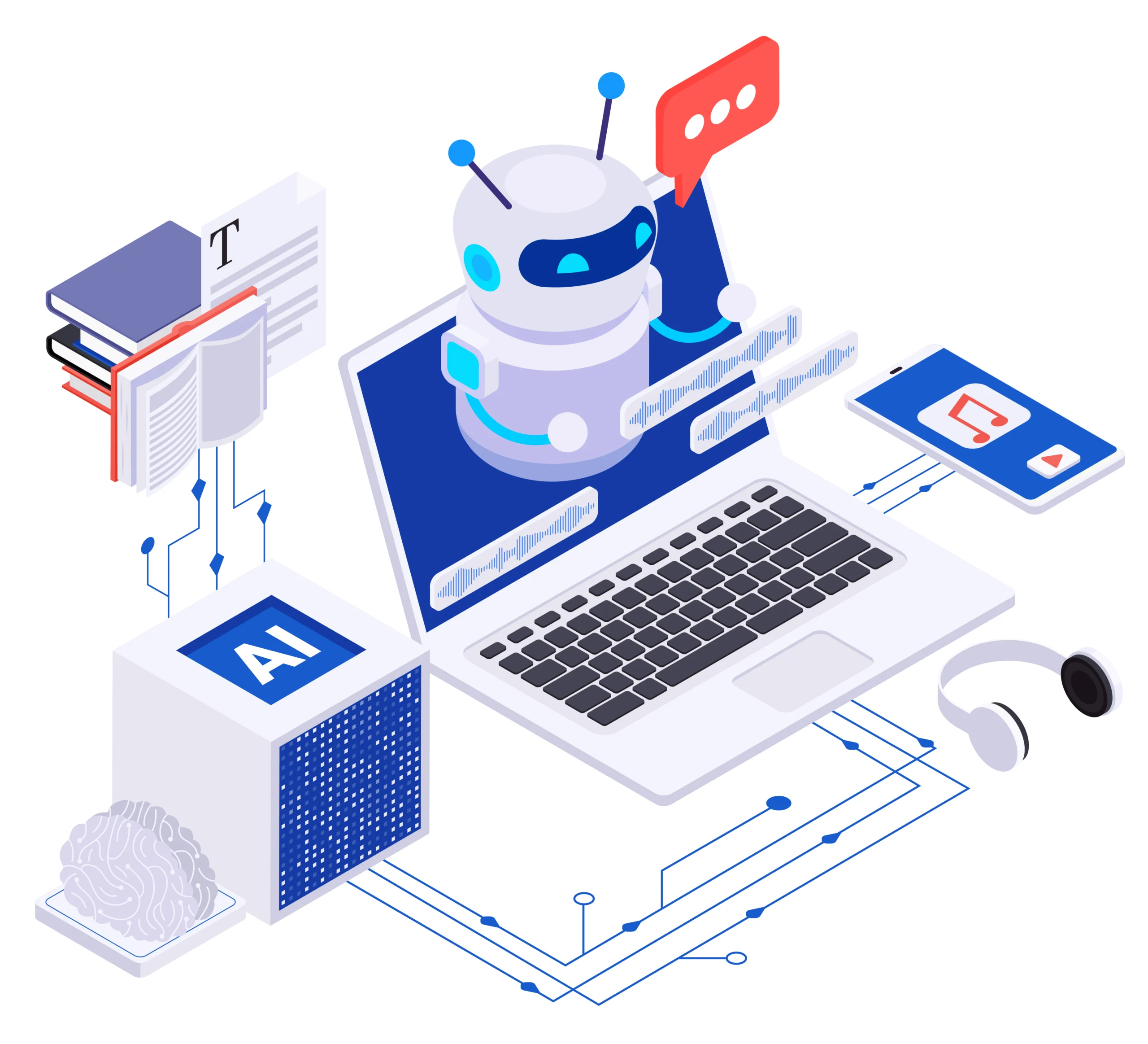16 total views
In a world where artificial intelligence (AI) is rapidly transforming industries, education is experiencing a seismic shift. From adaptive learning platforms to AI tutors and personalized content, machine intelligence is now a core component of modern pedagogy. But as we race ahead with innovation, a critical question arises: How do we balance the power of machine intelligence with the irreplaceable human touch in education?
The future of learning lies not in choosing between humans or machines, but in building a harmonious relationship where AI augments, not replaces, human educators. In this blog, we explore how this balance is being achieved—and why partnering with the right education app development company and Generative AI development company is key to building the next generation of intelligent learning platforms.
What Is Human vs. Machine Intelligence in Education?
Human intelligence in education encompasses empathy, critical thinking, ethics, and the ability to understand emotional and social cues. It’s the intuition a teacher uses to modify a lesson based on a student’s body language or the encouragement offered to a struggling learner.
Machine intelligence, particularly Generative AI, refers to systems capable of creating text, images, and feedback based on input. In education, this translates to:
- Adaptive quizzes
- AI-generated study plans
- Personalized content
- Virtual tutors and assistants
While AI is incredibly efficient at processing data and delivering personalized content, it lacks the human element necessary to foster deep learning, emotional development, and ethical guidance.
Why Is Balance Important?
🎯 1. To Personalize Without Dehumanizing
AI excels at personalization—analyzing student behavior and tailoring content to individual needs. However, too much reliance on algorithms can lead to a cold, robotic learning experience, devoid of human interaction. Balancing this with teacher-led guidance helps maintain student motivation, engagement, and emotional well-being.
🧠 2. To Teach Critical Thinking
AI can generate answers, summarize chapters, and even solve equations, but it does not teach students how to think. Educators must step in to:
- Encourage inquiry-based learning
- Foster discussions
- Guide moral and ethical considerations
This cognitive partnership between human instruction and machine efficiency is where true learning flourishes.
🤖 3. To Prevent Overdependence on Automation
Overreliance on AI can create passive learners. When students expect instant answers from chatbots or generative tools, they miss out on the struggle and growth that comes from problem-solving. Educators play a vital role in keeping the learning experience dynamic and mentally stimulating.
Real-World Examples of Human-Machine Collaboration
✅ AI-Powered Feedback with Human Moderation
Some platforms use AI to provide instant feedback on assignments but allow teachers to review and edit the suggestions. This speeds up the grading process without sacrificing human judgment.
✅ Virtual Tutors with Teacher Oversight
AI tutors can provide 24/7 support for students, especially in subjects like math and languages. However, they are most effective when teachers monitor usage, adjust learning paths, and offer support when the AI falls short.
✅ Generative AI for Content Creation
Many education apps use Generative AI to create flashcards, quizzes, or reading summaries. However, human educators ensure the content remains accurate, culturally relevant, and age-appropriate.
Partnering with a Generative AI development company allows startups and institutions to implement these solutions effectively, while an experienced education app development company ensures they are delivered through intuitive, secure, and user-friendly platforms.
The Role of Generative AI in Modern Learning
Generative AI brings exciting possibilities to education:
- Dynamic content creation
- Natural language tutoring
- Personalized feedback
- Virtual essay editors
- Real-time student performance analysis
However, the key lies in using Generative AI as a tool, not a teacher. While it automates tasks and enhances content delivery, it cannot replace:
- Empathy
- Mentorship
- Classroom management
- Ethics instruction
Therefore, educators and developers must work together to define the boundaries and responsibilities of AI in the learning process.
The Educator’s Evolving Role
As AI becomes more embedded in learning environments, teachers are evolving from content deliverers to learning facilitators and mentors. Their responsibilities now include:
- Curating and validating AI-generated content
- Guiding students through digital learning tools
- Teaching AI literacy and ethical technology use
- Maintaining emotional and social connections in a virtual environment
This new role underscores the importance of teacher training and support in AI-integrated classrooms.
Building Balanced Learning Platforms
For startups and educational institutions looking to build AI-enabled learning apps, striking the right balance between automation and human oversight is crucial.
Here’s how to do it:
1. Partner with the Right Development Teams
- A Generative AI development company can help you build intelligent systems that generate, analyze, and personalize learning content.
- A trusted education app development company will ensure that the UX is optimized for learners, teachers, and administrators.
2. Design with Human Oversight in Mind
Include teacher dashboards, content moderation tools, and override capabilities to keep humans in control of machine-generated output.
3. Focus on Ethical AI
Build systems that prioritize transparency, bias detection, data privacy, and accountability—especially in education where young learners are involved.
4. Enable Feedback Loops
Let students and teachers give feedback on AI-generated results. Use this to refine prompts, tweak models, and improve relevance over time.
5. Combine Synchronous and Asynchronous Learning
Use AI to power self-paced learning but combine it with live classes, peer discussions, or teacher check-ins to maintain community and connection.
Conclusion
AI is not here to replace teachers—it’s here to empower them. The future of education lies in balancing the analytical power of machines with the emotional intelligence of humans. Students benefit most when machine-generated content is delivered thoughtfully and refined through human insight.
To build this future, collaboration is key. By working with an expert Generative AI development company, you can unlock the full potential of artificial intelligence. And with the support of a skilled education app development company, your product can deliver that potential in a way that truly enhances learning.
The age of intelligent education is here. Let’s make sure it stays human at its heart.

